13items
-
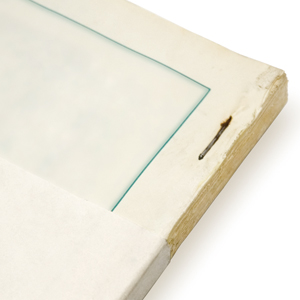
Side-stitch Binding
平綴じ
Hiratoji
Side-stitch binding refers to the method of binding magazines and booklets by forcing a wire through the side of the signature (printed paper folded into the size of the booklet), from the front to the back, near the spine. This simple method was
-

Sewn Binding
糸綴じ
Itotoji
Books and booklets can be made by sewing together the spine of the signatures (printed paper folded into the size of the book) with thread. This technique is called itotoji (sewn binding) or kagari. Because books made this way are strong and can be o
-

Lead
リード
Lead
A lead is a short sentence or paragraph placed between the headline and the article in newspapers, magazines and other publications providing a précis of the article and intended to stimulate reader interest. To distinguish it from the article and th
-
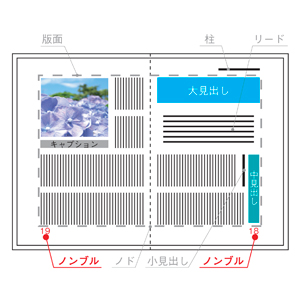
Numbering
ノンブル
Nonburu
Numbering refers to the numbering of pages and in Japanese publications is called nombre, from the French word. Books, magazines and other bound publications have the page number displayed on each page. This is also called pagination. Numbering ge
-
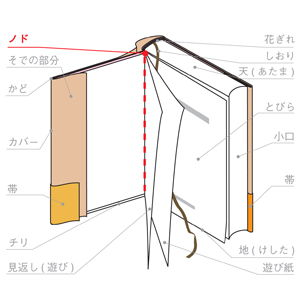
Gutter
ノド
Nodo
Gutter is the term for the bound sections (inner margins) of a book, magazine or other publication. It also refers to the margins between the printed text and the binding on any book or magazine surface. Setting the correct margin for the gutter w
-
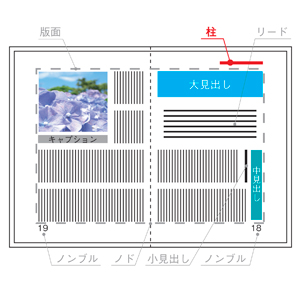
Headers and Footers
柱
Hashira
Headers and footers carry the document title, chapter, section and/or main points and are positioned in the margin area outside the main text area on pages of books, magazines, and other book-type publications. The purpose of this information is to m
-

Fore Edge
小口
Koguchi
The fore edge of a book, magazine or other bound publication is the transverse section on the side opposite the binding (spine). The Japanese term, koguchi, essentially means transverse section. In the general book production process today, when a
-
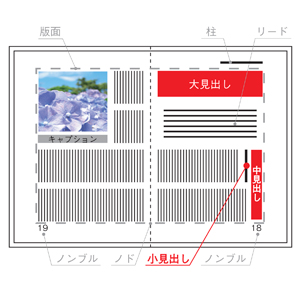
Headings
見出し
Midashi
A heading is a title placed at the beginning of a passage to provide a concise description of its content. In books, it refers to the titles given to each segment of the text according to chapter, section, paragraph, etc. In newspapers and magazines,
-
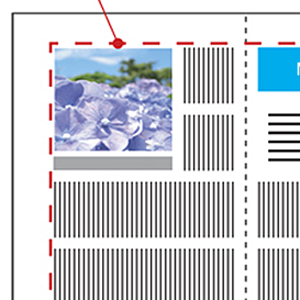
Hanmen
版面
Hanmen
Hanmen or hanzura (type page) originally referred to the entire printed area. It now primarily refers to the type area or printed region that makes up the contents of pages in books and magazines. In the latter case, secondary elements such as header
-
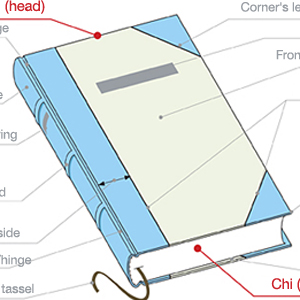
Ten (Head) and Chi (Foot)
天・地
Ten・Chi
Ten (head) refers to the top edge of pages in bound books and magazines. Chi (foot) refers to the bottom edge of those pages. Each of these is part of what is known as the koguchi (fore edge) in its broad sense. There are also occasions in which thes
-
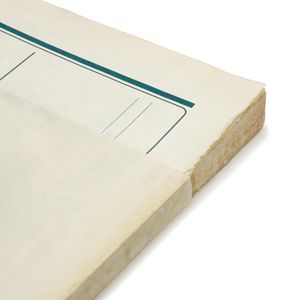
Adhesive Binding
無線綴じ
Musentoji
Adhesive binding (case binding) is the binding of all of the signatures (the printed sheets folded to the size of a book) that make up a book or a magazine at the spring using an adhesive. In the past, the tendency of pages to detach used to be a
-
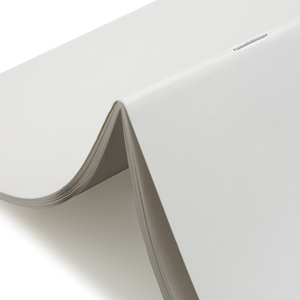
Saddle Stitch Binding (Inner Binding)
中綴じ
Nakatoji
Saddle stitch binding is the method for the binding together, using a wire (for example) from the center of the cover to the gutter, both of the covers and all of the signatures (the printed sheets folded to the size of a book) that made up the conte
-
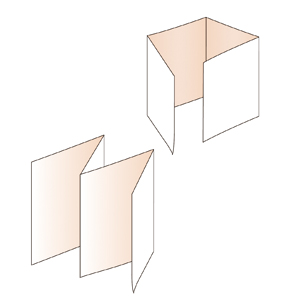
Folding
折り
Ori
Folding, in the case of books or magazines, is the name for the process by which the printed sheets are folded, accordion style, into the size of a book. Normally, books are made using sheets with multiple pages printed on each side, and then fold
